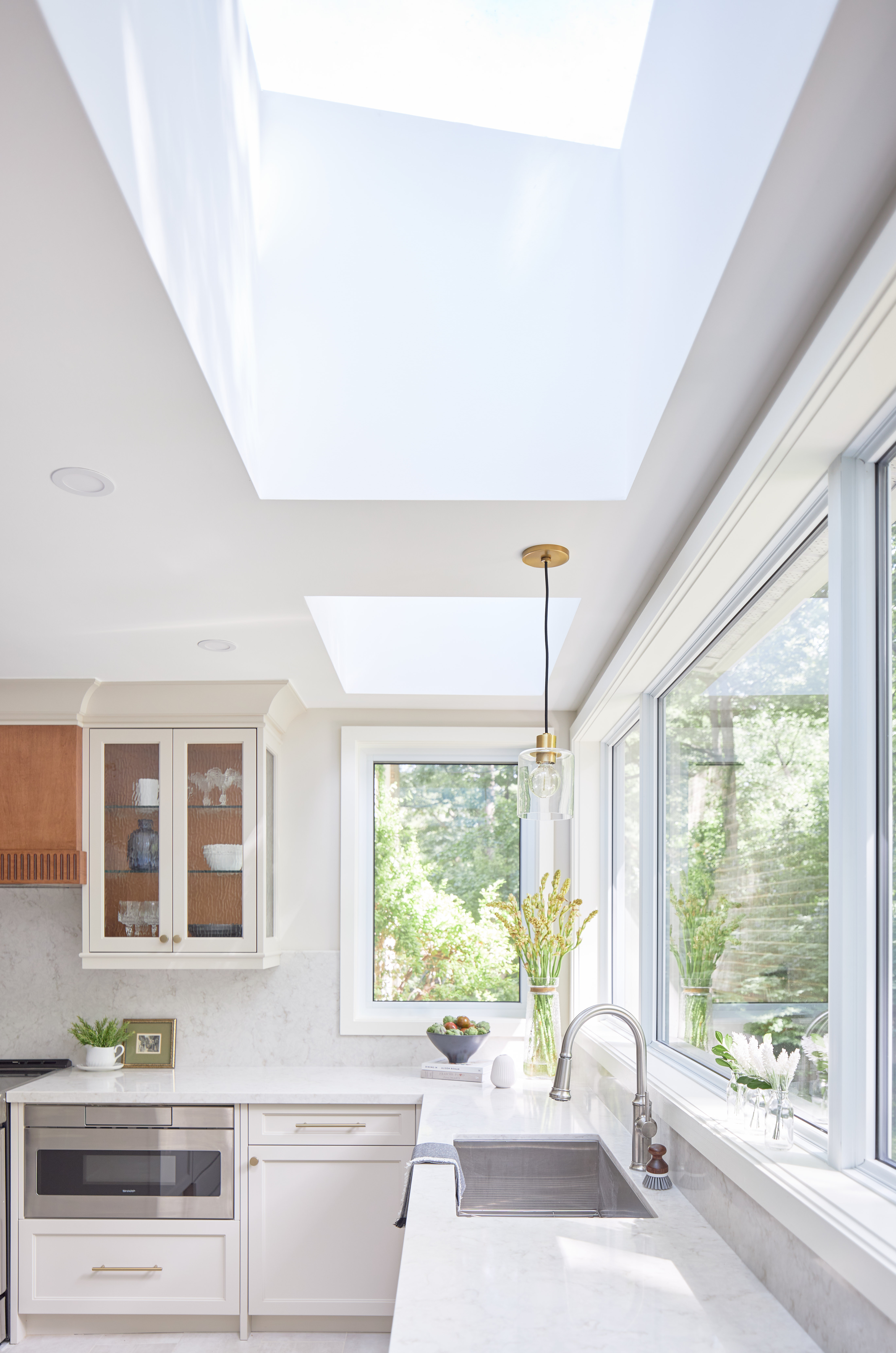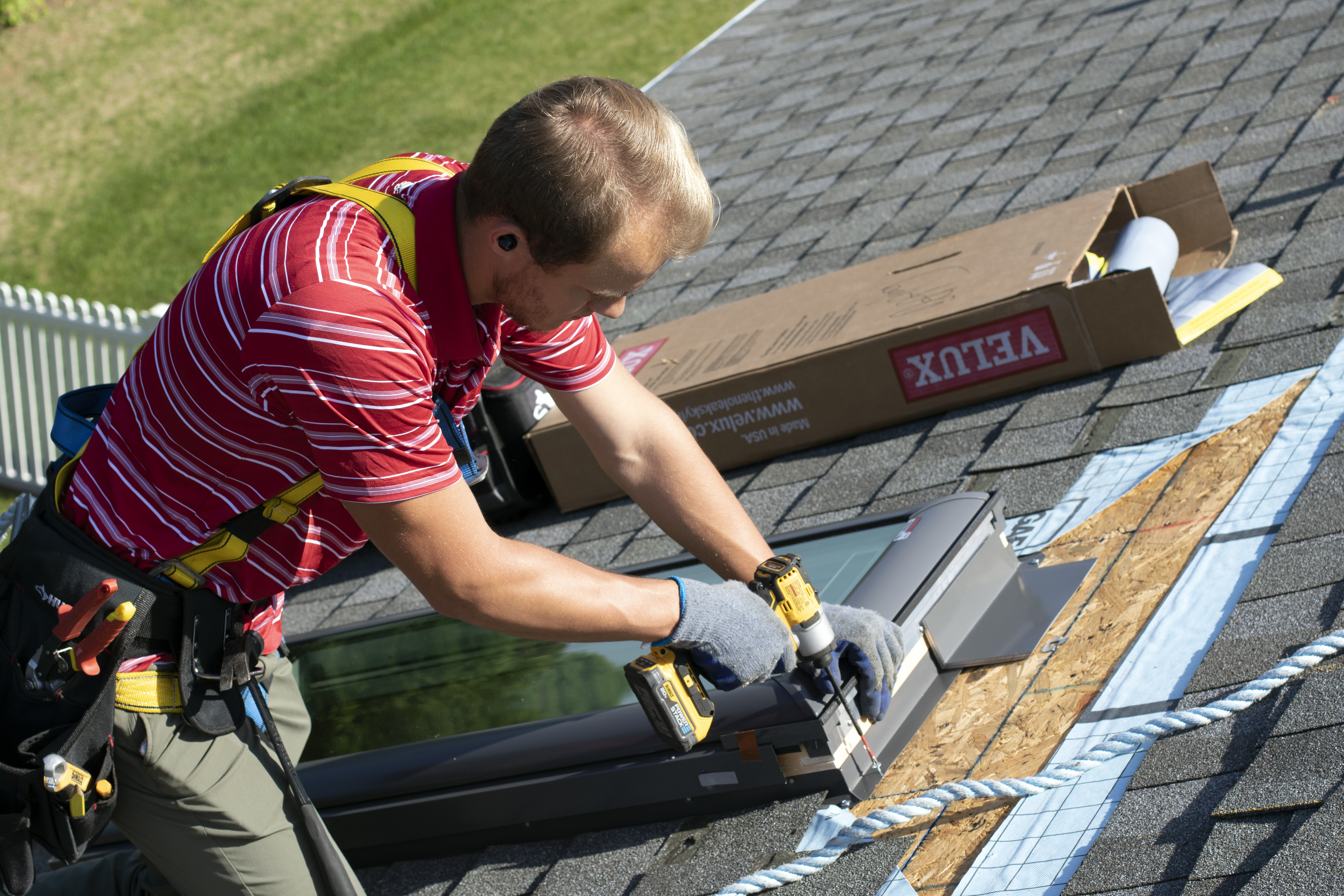5 Skylight Placement Tips for Any Home
Placing your skylight in your room
Adding skylights to your home is one of the best ways to transform a space into a favourite place. One of the most important design considerations for skylights is their placement. There are several design approaches to consider when placing skylights that can have different effects on daylight and the view.
This blog explores five considerations when placing your skylight. If you still need help with the placement of your skylight, consider booking a virtual design consultation with our team.
1. Light Shaft
If your room has a flat ceiling and the roof slopes towards an outer wall, placing the skylight closer to the outer wall will give you a short light shaft. This likely puts the skylight closer to the window, but the short light shaft will help bring light deeper into the room, and it will be worth it. Bringing in light from two angles always makes for a more even light, even if the window and skylight are closed. This also increases the chance of enjoying the view of the sky as the skylight will be lower.
Flaring the light shaft, making the opening at the ceiling larger than the skylight, is one of the most effective ways to spread the daylight in the room and increase the view through the skylight. It is also a chance to align the opening with other openings or objects in the room and connect the skylight visually to the space. You often have to work around trusses or rafters but exposing these to get more light is worth considering. A more advanced approach may be rounding the transition from light shaft to ceiling.
2. Proportion and Scale
The proportion and scale of the opening at the ceiling below the skylight has an opportunity to really tie the room together. Too big, too small or too square, may take away from the ceiling scape. Using the golden ratio or matching up with the room ratio can help achieve the right balance. Matching the scale or size of the opening to a window, door or other object in the room also connects them visually.

3. Large or multiple skylights
Using large or multiple skylights will provide more daylight and a bigger view. The great thing about adding additional skylights to a project is that the price of going larger or adding on a second or third skylight is much less than the first skylight. Like flaring the skylight, you often need to consider the structure of your roof and if the trusses or rafters will be exposed or capped. This can add to the aesthetic for many people. Multiple skylights also allow you to add a venting unit for fresh air by upgrading only one oft 
4. Frame the view
One of my favourite experiences of having skylights in my home is seeing the clouds float by and the tops of trees sway in the wind or even the brilliance of a blue fall sky. Most of my vertical windows face neighbouring houses, so the view to the sky is welcome. This works best when skylights are at eye level, like in a half story or at the top of stairs, but you can place the skylight and flare of the light shaft in a way to frame the view from almost anywhere in a room, maybe above your kitchen sink, your bathroom vanity or your favourite chair.
 5. Narrow, wall, and spotlight
5. Narrow, wall, and spotlight
It may seem counterintuitive, but a small or narrow opening below a skylight is sometimes desired. A small opening will give a more concentrated light, which could spotlight a piece of art, stream daylight down a wall, or create contrast with light to differentiate two spaces. I would say this is a more advanced approach and needs extra attention to placement, and a designer may be able to ensure you pull this one-off
Skylights can be amazing; take the time to consider your space and the placement of the skylights to optimize the experience and ensure you are turning a space into a favourite place!
Have more questions about the placement of your skylight? In addition to being daylight designers, our skylight design consultants are technical experts. Ask them anything about our products and how they work. We’re here to help! Schedule an appointment today!



